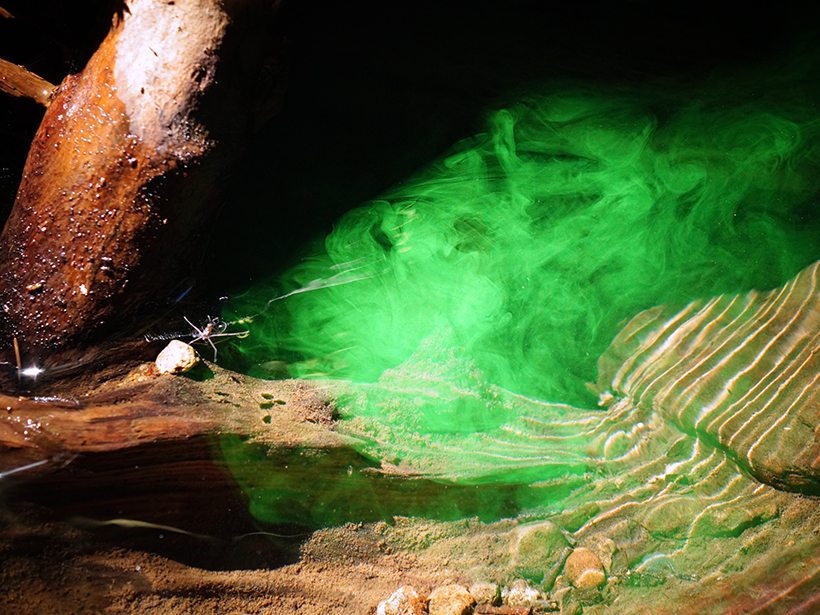Source: Journal of Geophysical Research: Biogeosciences
Stream metabolism—the difference between gross primary production and ecosystem respiration—is a useful indicator of ecosystem health. The metric helps explain the amount of biotic activity in a stream while also hinting at the water’s quality. To measure a stream’s metabolism, scientists employ a variety of methods, most of which track fluctuations in the water’s dissolved oxygen concentration, often focusing on the stream’s hyporheic zone, which is the water in the streambed and the groundwater body in direct contact with the stream.
About 10 years ago, the organic blue dye resazurin emerged as a viable tracer to study metabolic activity in surface water ecosystems and an alternative to oxygen-based methods. Resazurin is a redox indicator that transforms into the fluorescent pink compound resorufin in the presence of living microorganisms and other compounds. Resazurin converts into resorufin more rapidly in subsurface sediments than in the stream’s main channel. Because it provides information about water and sediment interactions, especially in a stream’s hyporheic zone, resazurin is referred to by hydrologists as a “smart” tracer.
In recent years, research has confirmed the relationship between respiration and resazurin transformation; however, several questions about the technique remain unanswered. For one, the resazurin-respiration relationship has not been thoroughly compared to oxygen-based methods under diverse field conditions (e.g., mountain streams compared to lowland streams). Additionally, there remains no consensus on how to report results; for example, some studies report resazurin loss, whereas others quantify resorufin production.
Knapp and Cirpka explored these questions in a new study that also compared tracer- and oxygen-based investigative methods. The scientists conducted 13 reactive tracer tests in seven different lowland streams in southwestern Germany. Using past research as a guide, they applied various metrics to quantify how the streams processed resazurin. They also compared the tracer transformation to several hydrologic variables and ecosystem respiration.
Among the different metrics tested, the authors found that resazurin uptake lengths and resazurin-to-resorufin processing ratios are the best indicators of ecosystem respiration. In contrast to expectations from previous studies, however, the relationships were not linear. Furthermore, the findings indicated that the relationship between tracer processing and stream metabolism was poor in the studied streams, which may indicate the method is not suitable for lowland streams. In the flat reaches of the study area, oxygen-based methods may be more appropriate.
The findings highlight both the strengths and limitations of resazurin applications. The results point to the need for further research into different reaction mechanisms and their link to stream metabolism under field conditions. (Journal of Geophysical Research: Biogeosciences, https://doi.org/10.1029/2018JG004797, 2018)
—Aaron Sidder, Freelance Writer
Citation:
Sidder, A. (2019), Understanding stream metabolism with reactive tracers, Eos, 100, https://doi.org/10.1029/2019EO121127. Published on 29 April 2019.
Text © 2019. The authors. CC BY-NC-ND 3.0
Except where otherwise noted, images are subject to copyright. Any reuse without express permission from the copyright owner is prohibited.

